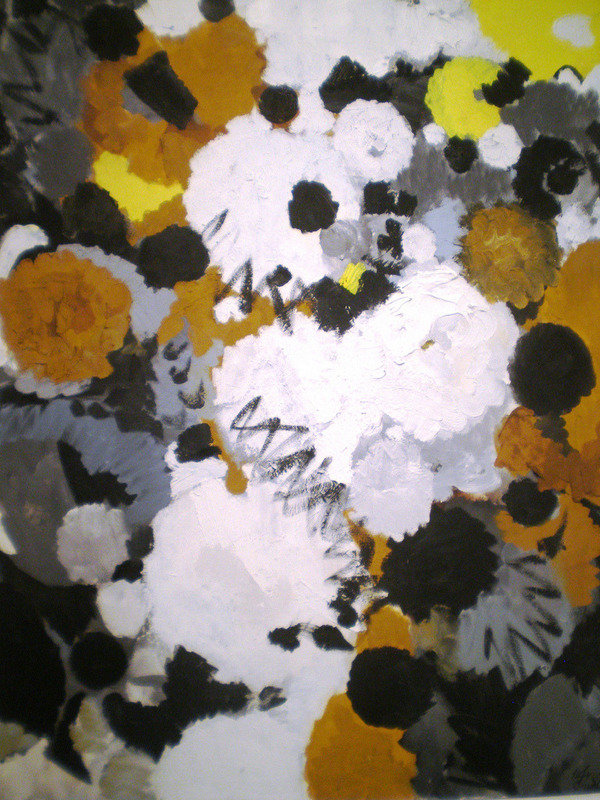Ernst Wilhelm Nay
dal 17/9/2012 al 2/2/2013
Segnalato da
17/9/2012
Ernst Wilhelm Nay
Kunstmuseum Bonn, Bonn
The polyhone picutre. The exhibition includes 150 works on paper owned by the Stiftung, museums and private lenders, that describe Nay's artistic development from the early 'Lofoten-Bilder' up to the late 'Scheiben-Kompositionen'. It illustrates how his drawings make clear the painting's rhythmic and constructive aspects.

In close cooperation with the Ernst Wilhelm Nay Stiftung in Cologne, the Kunstmuseum Bonn
has conceived a comprehensive overview exhibition of Ernst Wilhelm Nay’s (1902, Berlin – 1968,
Cologne) gouaches, water colours and drawings. The exhibition includes 150 works on paper
owned by the Stiftung, museums and private lenders, that describe Nay’s artistic development
from the early »Lofoten-Bilder« up to the late »Scheiben-Kompositionen«. This compilation of
works shows the equal status that gouache, water colour and painting have in Nay’s oeuvre
in regard to his dealing with colour. With good reason, Nay is considered the one German artist
who after 1945 has realized most consequently colour as a painting’s autonomous energy. The
exhibition illustrates how his drawings make clear the painting’s rhythmic and constructive
aspects. Still his main topic is colour, as it was both means and purpose for Nay when
interpreting the picture’s dynamic form.
Nay’s early works, the »Lofoten-Bilder«, which he started to paint from 1937 on, convey the
power of the experience of nature as well as the new intensity of colour. Water colours from
his travels to North Norway already show the freedom that colour was given in this medium,
especially when compared to Nay’s paintings. While the artist’s colourful works that were
made during the war as well as his »Hekate-Bilder« which he painted between 1945 and 1948
are figurative and deal with mythological topics, his works became more abstract with the
lighter »Fugalen-Bilder« he began painting in the late 1940s. Since 1955, the disc had become
the dominating motive which from 1963 on he began to cross with a line, hence creating the
form of an eye. His last works which he made until his death in 1968 are less dramatic than the
»Augen-Bilder« as he reduced their colour to create a spaceless composition of planes. This
simplicity once again illustrates the autonomous power of colour.
After its presentation in Bonn, the exhibition will be on view at the Museum Liner, Appenzell /
Switzerland and at the Mönchehaus Museum für Moderne Kunst, Goslar.
The exhibition will be accompanied by a catalogue published by Hatje Cantz-Verlag with
essays by Volker Adolphs, Stephan Berg, Erich Franz, Stefan Gronert, Ulf Küster, Christoph
Schreier and Roland Scotti at a price of 25 Euros.
Mobility partner: Deutsche Bahn
Save money with your BahnCard! Holders of the BahnCard will pay the reduced admission fee of 5.60
EUR instead of 7 EUR upon presentation of their card. For further information please visit:
www.bahn.de/kultur
Curators
Dr. Christoph Schreier, T 0228 77 -6212
christoph.schreier@bonn.de
Dr. Volker Adolphs, T 0228 776225
volker.adolphs@bonn.de
Special Events:
Sunday, 7 October 2012, 11 a.m. Guided tour with curator Dr. Volker Adolphs.
Wednesday, 7 November 2012, 7 p.m. »In Dialogue«: Dr. Achim Sommer,
director of the Max Ernst Museum Brühl, in conversation with
the exhibition curators Dr. Volker Adolphs and Dr. Christoph
Schreier.
Image: Ernst Wilhelm Nay 'White Path', 1957, Milwaukee Museum of Art, Milwaukee, Wisconsin
Press contact Sarah Waldschmitt, T 0228 776206
E-Mail: sarah.waldschmitt@bonn.de
Press conference 18. September 2012, 11 Uhr
Opening 19. September 2012, 20 Uhr
Kunstmuseum Bonn
Museumsmeile
Friedrich-Ebert-Allee 2 | 53113 Bonn
Hours:
Tues – Sun 11 a.m. – 6 p.m.
Wed. 11 a.m. – 9 p.m.
Admission
1-day ticket regular € 7,00 reduced € 3,50
Group ticket
10+ people, per ticket regular € 5,60 reduced € 2,80
Family ticket € 14,00
Annual ticket regular€ 40,00 reduced € 20,00



